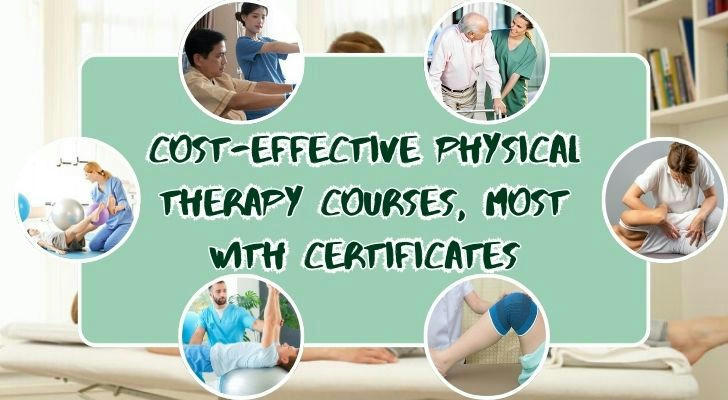What's Hidden Behind the High Salary of a Physical Therapy Assistant📚️📢?
As the population ages and demand for rehabilitation care increases, the U.S. Bureau of Labor Statistics (BLS) projects a 19% growth in PTA employment from 2022 to 2032, outpacing the average for all occupations. Governments are promoting health policies to address this trend. Whether you are a recent graduate or looking for a career change, this is an opportunity not to be missed! View application steps

🔎 How to Get Cost-Effective PTA Courses
Government-Supported Certification Programs
U.S. Department of Labor Registered Apprenticeship Program
Provides certified training for physical therapy assistants (PTAs) and issues a nationally recognized apprenticeship certificate upon completion.
Some programs work with medical institutions to provide on-the-job practice and exam coaching to help pass the PTA National Certification Exam (NPTE).
Community College Certification Program
Keiser University Physical Therapist Assistant Program
CAPTE certified program with low tuition and NPTE exam for license after graduation.
Supports federal student aid (FAFSA) and in-state tuition waivers .
Mt. San Antonio College (Mt. SAC) Career Training Program
- Provides physical therapy assistant certificate program at a lower cost than traditional colleges and includes clinical internships.
Nonprofit-Supported Certification Training
Staten Island PPS Apprenticeship Program
Provides certified rehabilitation peer advocate (CRPA) and home health aide (HHA) training, and some programs cover physical therapy-related skills.
Issues industry-recognized certificates upon completion of training and supports job recommendations.
Online Platform and Continuing Education
Physiotutors Certified Courses
Offer online courses on topics such as musculoskeletal rehabilitation. After completing the course, you can earn continuing education credits (CEUs), and some courses provide certificates of completion.
Suitable for certified therapists to update their knowledge or supplement their skills.
Internal Certification Programs in the Medical System
Internal Training Programs in Hospitals
For example, the University of Maryland Medical Center provides physical therapy assistant training for employees, issues institutional certification certificates upon completion, and assists in obtaining state licenses .
Priority is given to internal employees or volunteers, and some programs are open to the community.
Industry Association Certification Resources
American Physical Therapy Association (APTA)
Provides scholarships and certification exam subsidies exclusively for student members, and assists students who complete the CAPTE certification course to obtain licenses.
Regularly releases low-cost continuing education courses, and completing them allows you to obtain CEU certificates .
See more
💡 Program Benefits
Affordability: Community college programs cost $3,000 to $10,000, while private school programs can cost upwards of $20,000.
Flexibility: Apprenticeships allow students to earn while they learn, and online programs are suitable for working adults.
Career Support: Many programs include job placement services. For example, Staten Island PPS works with local clinics to hire graduates.
Diverse Entry Points: Programs accept students with a high school diploma or GED, and no health care experience is required.
📝 What You Can Learn
PTA programs typically include:
Core Courses: Anatomy, physiology, kinesiology, and medical terminology.
Clinical Skills: Training in therapeutic exercises, treatment modalities (e.g., ultrasound, electrical stimulation), and patient safety protocols.
Practical Experience: 16-20 weeks of clinical rotations in a hospital, nursing home, or outpatient clinic.
Licensure Preparation: Guidance in passing the National Physical Therapy Examination (NPTE) and meeting state licensure requirements.
✨️ Government Support for Physical Therapy
Legislation: The U.S. government has enacted laws that make it easier for physical therapists to access federal student loan repayment programs, encouraging more professionals to enter the field.
Incentives: Various incentives are offered to physical therapists and assistants to promote workforce growth and retention in underserved areas.
Research Funding: Agencies such as the National Institutes of Health provide funding for research aimed at improving physical therapy practice and meeting the changing health care needs of the population.
🚀 Career Outlook
PTAs work in a variety of settings, including:
Hospitals
Outpatient clinics
Schools
Home health care services
The average annual salary for PTAs in 2023 is $62,770 , with top earners making more than $80,000 in high-demand states like California and Texas.

🎉 Success Story: Maria’s Journey from Apprentice to Licensed PTA
Maria is a single mom in New York who struggled to pay for college. Through the Staten Island PPS Apprenticeship Program, she earned her certification while working part-time at a local clinic. The program paid for her exam and found her a job at a rehabilitation center. Today, Maria earns $65,000 per year and mentors new apprentices. “This program changed my life,” she says. “I can support my family and help others regain their independence.”
🗝 Conclusion
Low-cost and government-supported PTA training programs make stable, high-growth healthcare careers possible.By leveraging apprenticeships, community colleges, and nonprofit programs, aspiring PTAs can gain skills, earn certifications, and obtain meaningful employment without going into crushing debt. As the demand for rehabilitative care continues to grow, these programs remain critical to building a diverse, skilled workforce.
